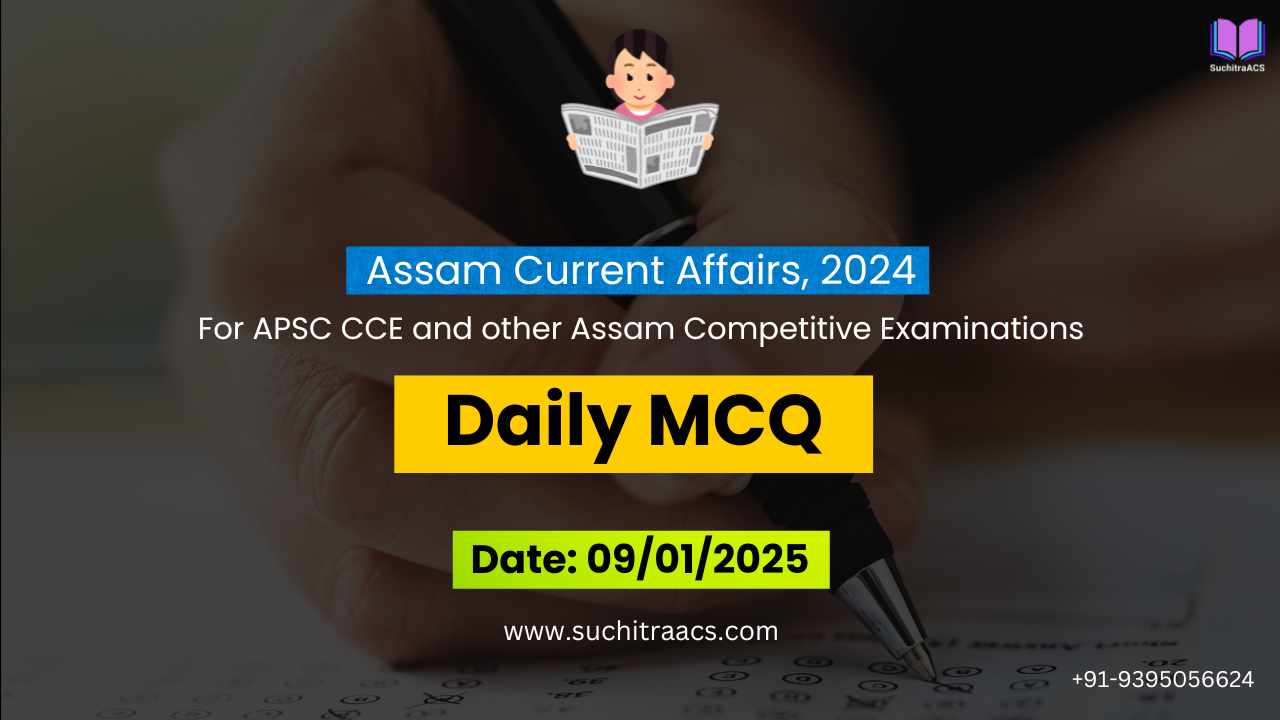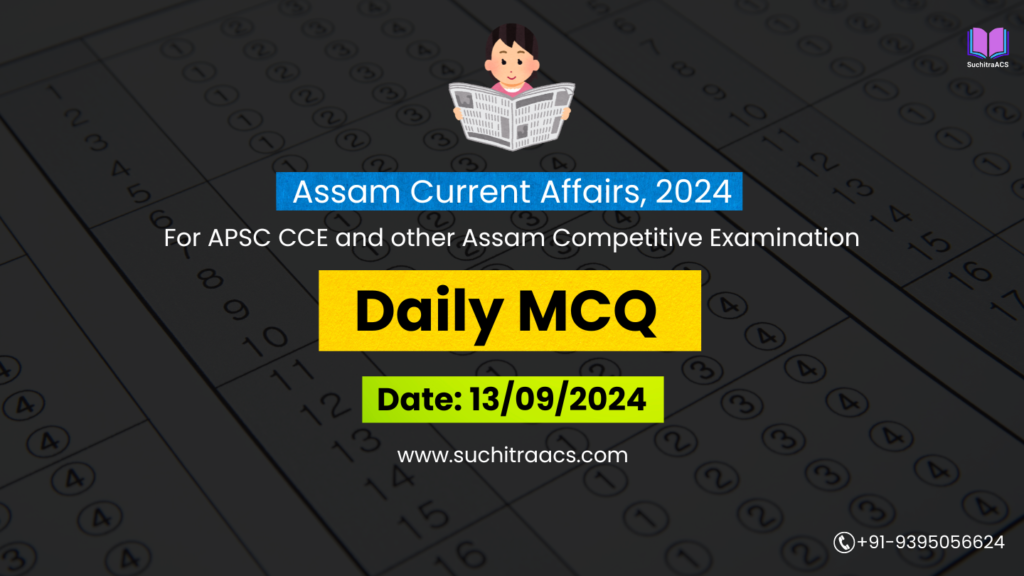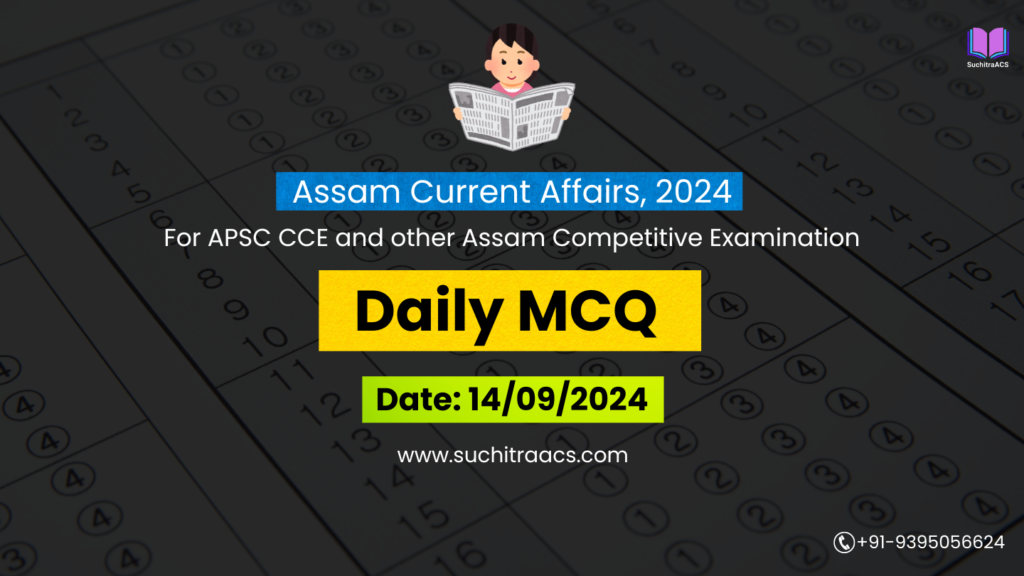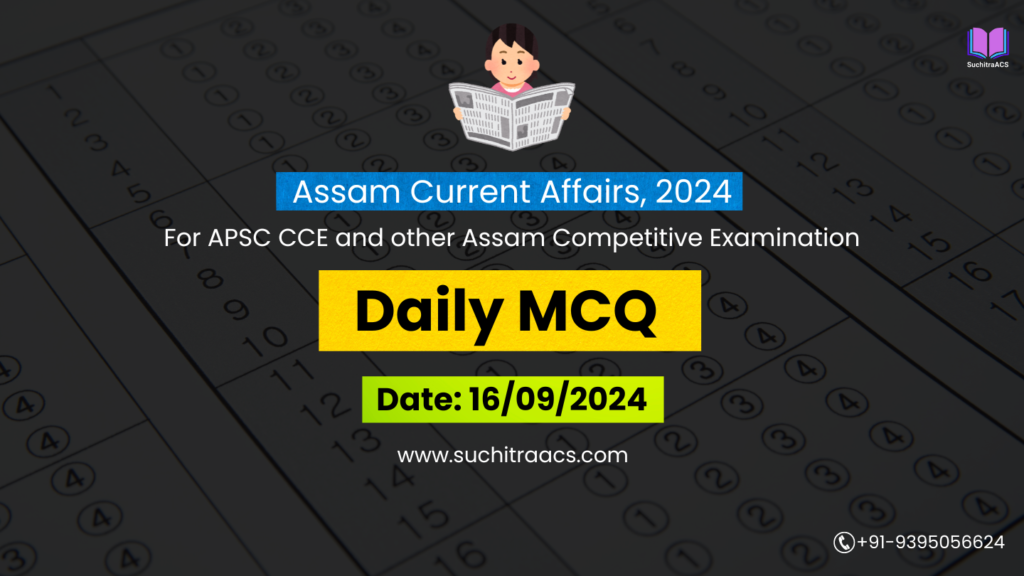APSC MCQs / APSC Prelims Practice Questions based on Assam Tribune (Daily) – 09/01/2025
For APSC CCE and other Assam Competitive examinations aspirants, practicing Daily MCQs is vital. This blog covers most important Prelims questions from the Assam Tribune today (09-01-2025). These issues are key for both APSC Prelims syllabus, offering insights into the important topics of current affairs.
APSC MCQs / APSC Prelims Practice Questions (Date: 09/01/2025)
1. Brahmaputra Basin Biodiversity Conservation Initiative
Question 1: Which of the following species is an endemic species protected under the Brahmaputra Basin Biodiversity Conservation Initiative?
A. Gangetic Dolphin
B. Snow Leopard
C. Indian Pangolin
D. Olive Ridley Turtle
Answer: A. Gangetic Dolphin
Explanation:
The Gangetic Dolphin, India’s national aquatic animal, is endemic to the Ganga and Brahmaputra river systems. It is a flagship species for the Brahmaputra Basin Conservation Initiative.
Question 2: What is the primary purpose of riparian forests as highlighted in the Brahmaputra Basin Biodiversity Initiative?
A. Promoting tourism along the riverbanks.
B. Stabilizing river ecosystems and preventing soil erosion.
C. Establishing fish breeding centers.
D. Supporting commercial forestry operations.
Answer: B. Stabilizing river ecosystems and preventing soil erosion.
Explanation:
Riparian forests along the Brahmaputra play a crucial role in maintaining ecological balance by stabilizing soil, preventing erosion, and supporting biodiversity.
2. Wildlife Corridors in Northeast India
Question 3: Which of the following wildlife corridors connects Assam to West Bengal for tiger and rhino movement?
A. Kaziranga-Karbi Anglong Corridor
B. Manas-Buxa Corridor
C. Dihing Patkai Corridor
D. Balpakram-Khasi Hills Corridor
Answer: B. Manas-Buxa Corridor
Explanation:
The Manas-Buxa Corridor is significant for enabling the movement of tigers and rhinos between Assam and West Bengal, helping maintain genetic diversity.
Question 4: Eco-bridges are primarily constructed to:
A. Increase tourism in national parks.
B. Provide safe passage for wildlife over highways.
C. Improve connectivity in remote regions.
D. Facilitate the migration of fish in river ecosystems.
Answer: B. Provide safe passage for wildlife over highways.
Explanation:
Eco-bridges are structures designed to mitigate human-wildlife conflicts by allowing animals to cross highways safely.
3. Digital Connectivity Boost in Northeast India
Question 5: Which flagship program is responsible for expanding rural broadband connectivity in India, including the Northeast?
A. BharatNet
B. Digital India Mission
C. Startup India
D. National Optical Fibre Initiative
Answer: A. BharatNet
Explanation:
BharatNet is India’s rural broadband initiative, focusing on connecting gram panchayats with high-speed internet, including those in the Northeast.
Question 6: Satellite-based internet is crucial for Northeast India because:
- The region’s terrain makes optical fiber networks difficult to install.
- It is more cost-effective than terrestrial networks.
- It ensures communication during natural disasters.
Select the correct answer using the code below:
A. 1 and 2 only
B. 2 and 3 only
C. 1 and 3 only
D. 1, 2, and 3
Answer: C. 1 and 3 only
Explanation:
While satellite internet is essential for difficult terrains and disaster communication, it is generally more expensive than terrestrial networks.
4. Greening of Greater Guwahati City
Question 7: What is the main environmental objective of the “Greening of Greater Guwahati City” initiative?
A. Enhancing tourism in Guwahati.
B. Promoting urban forestry to combat heat islands.
C. Increasing agricultural productivity in peri-urban areas.
D. Creating eco-parks for biodiversity conservation.
Answer: B. Promoting urban forestry to combat heat islands.
Explanation:
The initiative focuses on increasing green cover to mitigate the urban heat island effect and improve air quality in Guwahati.
Question 8: The term “indigenous species” refers to:
A. Species introduced from other regions.
B. Species native to a particular region.
C. Species cultivated for commercial purposes.
D. Species protected under international treaties.
Answer: B. Species native to a particular region.
Explanation:
Indigenous species are native to a specific geographic area and play a vital role in maintaining local ecological balance.
 APSC Prelims Crash Course, 2025
APSC Prelims Crash Course, 2025
at most affordable rate in Assam!

🔔 Join Our WhatsApp Study Group!
For exclusive access to premium quality content, including study materials, current affairs, MCQs, and model answers for APSC CCE and other Assam competitive exams.
Click here to join: SuchitraACS Study WhatsApp Group
📚 Want to know more about SuchitraACS’s most affordable courses?
Click here to know more: SuchitraACS Courses for APSC CCE and Assam Competitive Examinations




